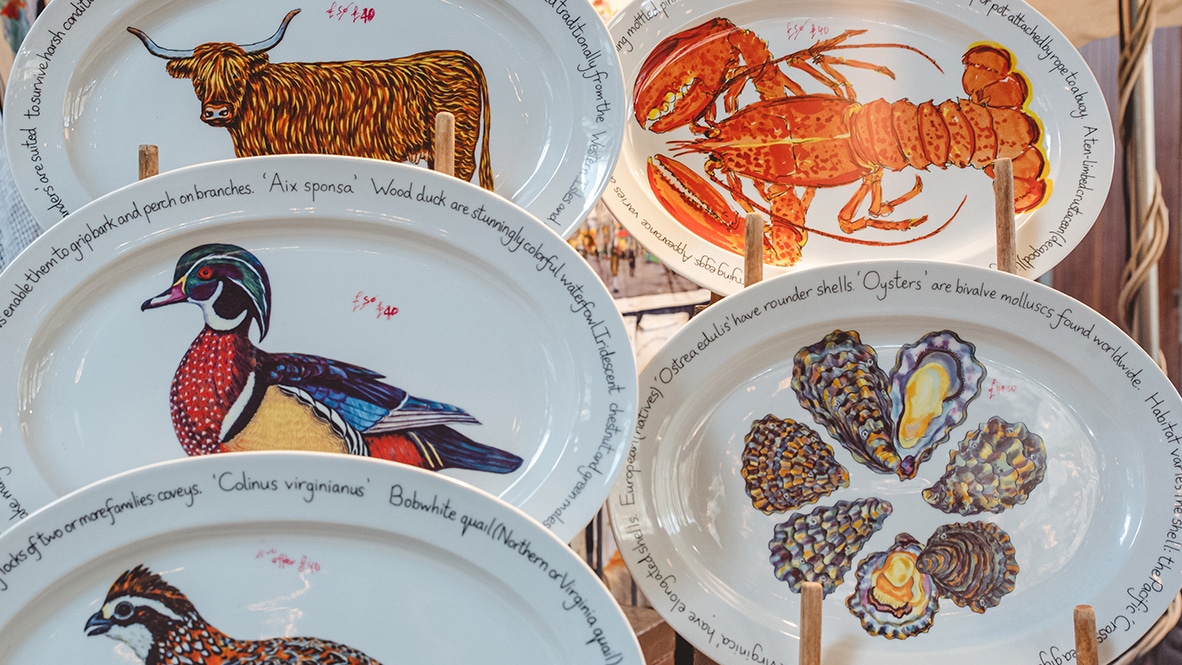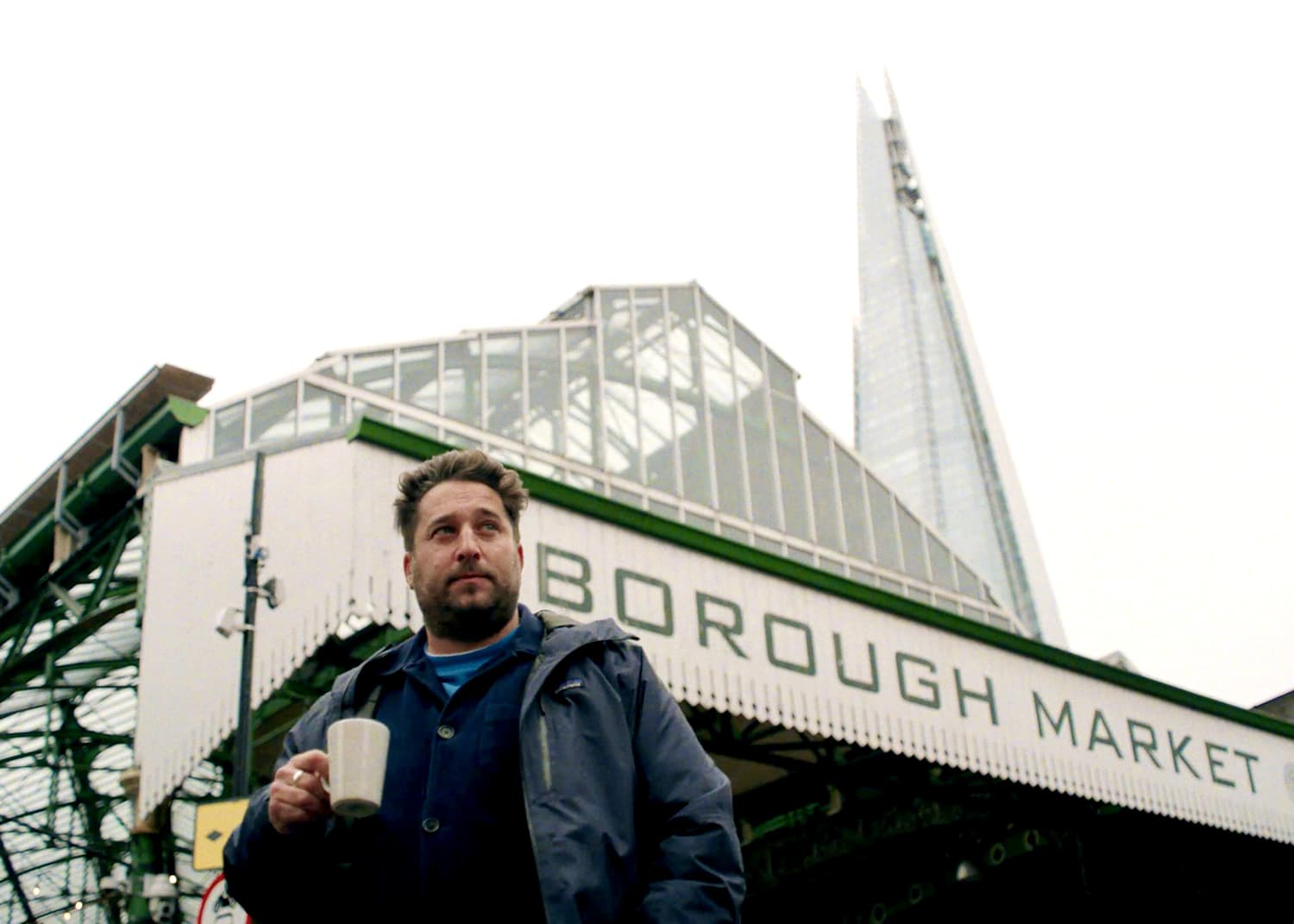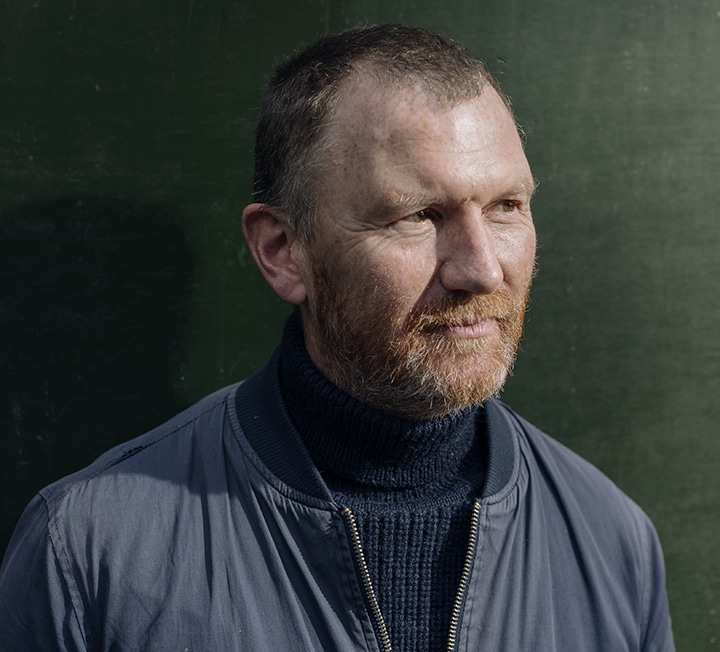Q&A: Steven Brown
The farmer responsible for 13 Acre Orchard on regenerative systems, eliminating waste and the support provided by greedy chickens
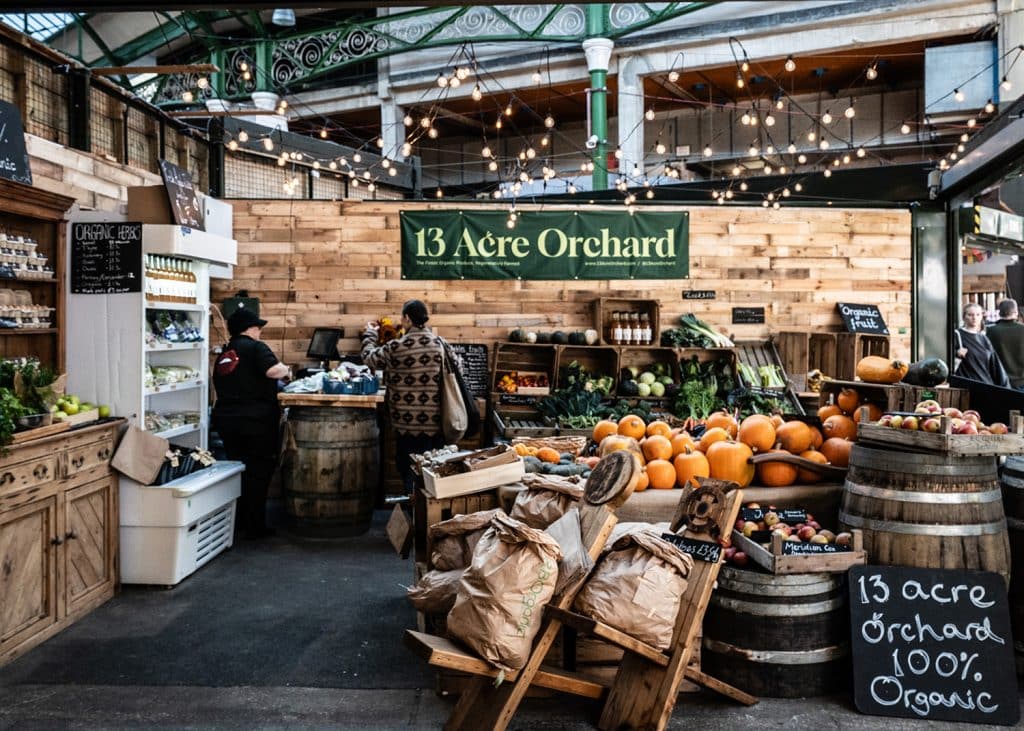

“EVERYTHING GROWS BY ITSELF. MY JOB IS TO MITIGATE ANY ISSUES THAT MIGHT CAUSE PROBLEMS FOR THAT GROWTH”
Interview: Mark Riddaway
Most farmers are born to the role, their roots dug in deep across the generations. Not Steven Brown. “I never really thought I’d be doing this,” he says. “I just always wanted to spend my life outside. Long story short, it turned out the way I could spend the most time outside was through farming.” What began as a series of outdoor jobs became a genuine vocation after Steven found work on a permaculture farm – an approach to food production informed by the natural interplay that allows complex, diverse ecosystems to thrive in the wild. “You look around and there are thousands of trees, wildflowers, shrubs and crops, all squeezed together into this tiny space,” he says. “I started to read a lot about the positive influence this type of farming can have. It really helped shape the way I see the world.”
Steven’s evolving worldview is now being applied in a small but systematic way at 13 Acre Orchard, a beautiful plantation of fruit trees and vegetable patches on a farm close to Saffron Walden in Essex. For the past three years, almost entirely unaided, he has been slowly transforming this patch of land into a regenerative farming system, the produce from which he sells at the new 13 Acre Orchard stand at Borough Market.
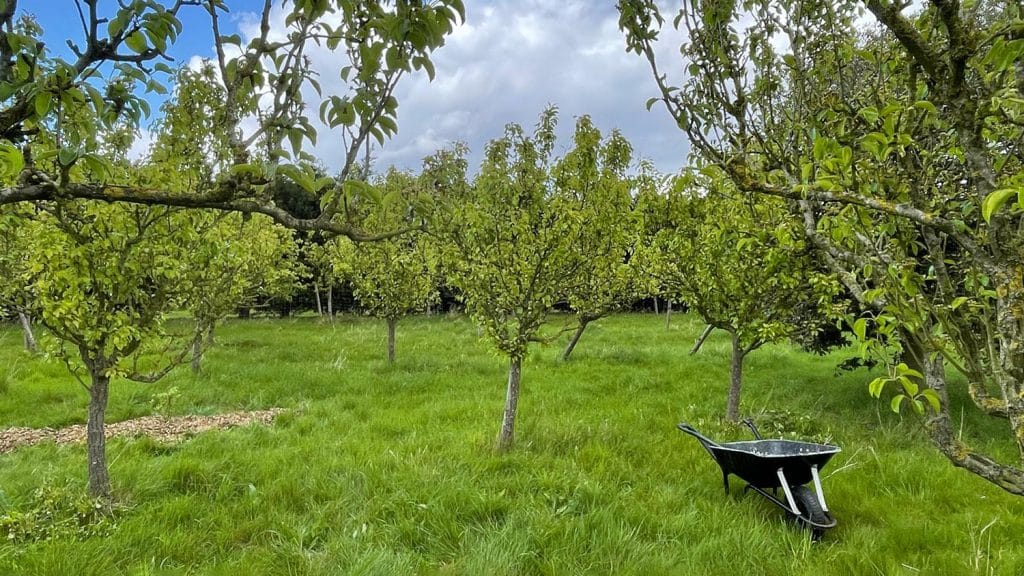
How did you come to be running 13 Acre Orchard?
I grew up in this area. A friend of mine introduced me to Laura, who owns the farm. She’d just had a son, and the workload involved in running the orchard was proving too much – even without having children, it’s a lot. The first time we met, I spent a couple of hours walking around the farm while she explained that was involved, and I was thinking, she’s got to be nuts, this is ridiculous, how are you supposed to do all this? But I still came back the next week to have another look. I did a bit of research, I made the visit a few times, and every time I came here it felt a bit more realistic – a big challenge, but possible. I thought, let’s just take the world as it is and see what happens. I’d worked with trees before at the other permaculture place, but nothing on this scale. It’s been non-stop since then. I’ve been working flat out, all the while trying to figure out how to do this, how to improve the land.
You describe what you do at 13 Acre Orchard as ‘regenerative’ farming. In simple terms, what does that mean?
It starts with the idea that a farmer is there to look after the land. In a regenerative structure, the land you’re looking after will improve as you’re farming. As you grow your vegetables or raise your livestock, or whatever it is you’re doing, you’re putting more carbon into the soil, you’re looking at how water moves through the landscape, you’re creating more wildflowers, more insects are coming, there’s a growing abundance of everything, from microscopic life up to bigger things like birds. There are lots of different elements you can add in, but the main thing I’m concentrating on is building the soil health and depth, creating biodiversity on a microscopic level – more bacteria and fungi, microarthropods and macroarthropods. If you can feed those things, they in turn feed the trees, so you don’t need the fertilisers. That process also results in the carbon sequestering that people talk about us needing more of. You’re sticking carbon straight in the ground, and that’s helping the trees to be healthier as well.
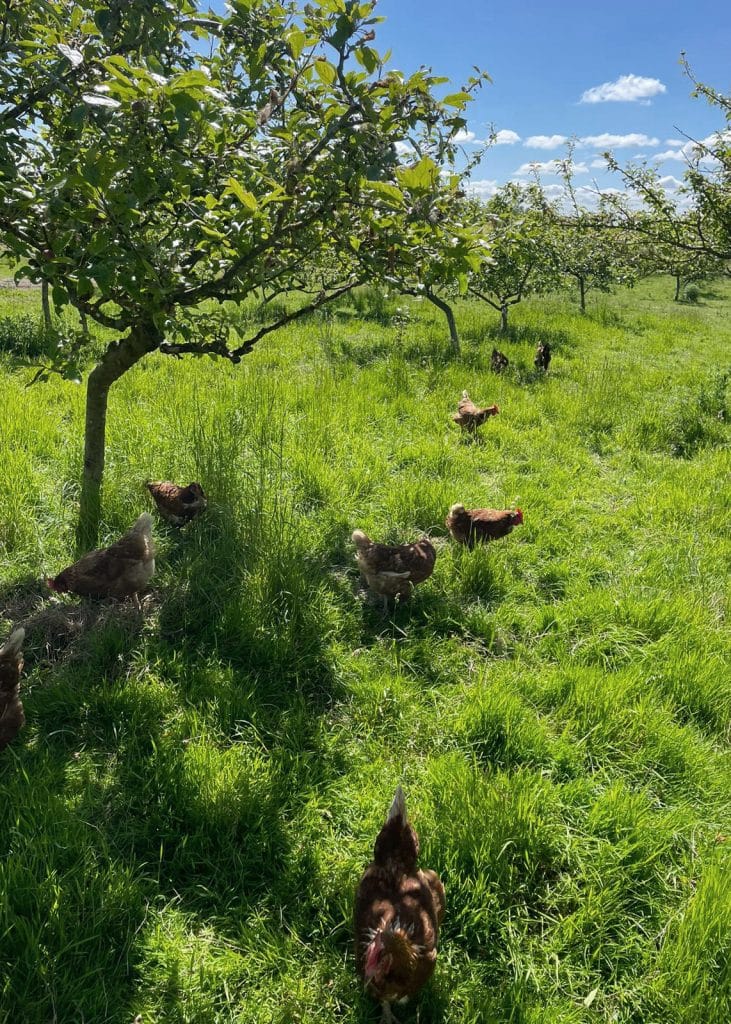
So, you’re intervening in those natural cycles far less than a conventional farmer would do…
Yes, it grows by itself. Your job as the farmer is to mitigate any issues that might cause problems for that growth. Compaction in the soil is the big one. Too much water can also cause problems, as can water in the wrong places. To mitigate that, putting a pond into the landscape can bring all the water together while also creating an environment which is beneficial for different plants, so you get more pond life and healthier trees.
What are you currently growing at 13 Acre Orchard?
Mostly, it’s apples, plums and pears. We have chickens for eggs – Laura looks after all the chickens still. They live under the apple trees and eat lots of the insects that would normally cause problems to the apples. They also produce plenty of natural fertiliser.
We also have a small vegetable garden, which we’re looking to expand, and we’re going to possibly do some flowers very soon too. My long-term plan is to incorporate a lot more growth within the orchard in a way that benefits the trees. Rhubarb, for example, grows well under fruit trees. It will come up at the beginning of the season and grow up big and help the trees to grow. Later in the year I’ll grow another crop within the same space. There’s a world of possibilities – it’s a bit overwhelming at times, but all very, very exciting.
What do you do to ensure that as little as possible is wasted?
We juice the apples that nobody would want to buy. After extracting the juice, you’re left with a pulp, and we use that pulp to make fruit jelly. My mum makes all the fruit jellies and jams – she’s been doing that her whole life, basically. Anything we can’t use gets made into compost, which goes into the vegetable garden and around the trees. Any cardboard waste is also getting incorporated into the compost. The idea is that there is no waste anywhere along the way. At some point in the future, hopefully we’ll be able to use potato starch as pallet wrap – at that point, I don’t think we would have any waste at, because that’ll go into compost as well. It can be done!
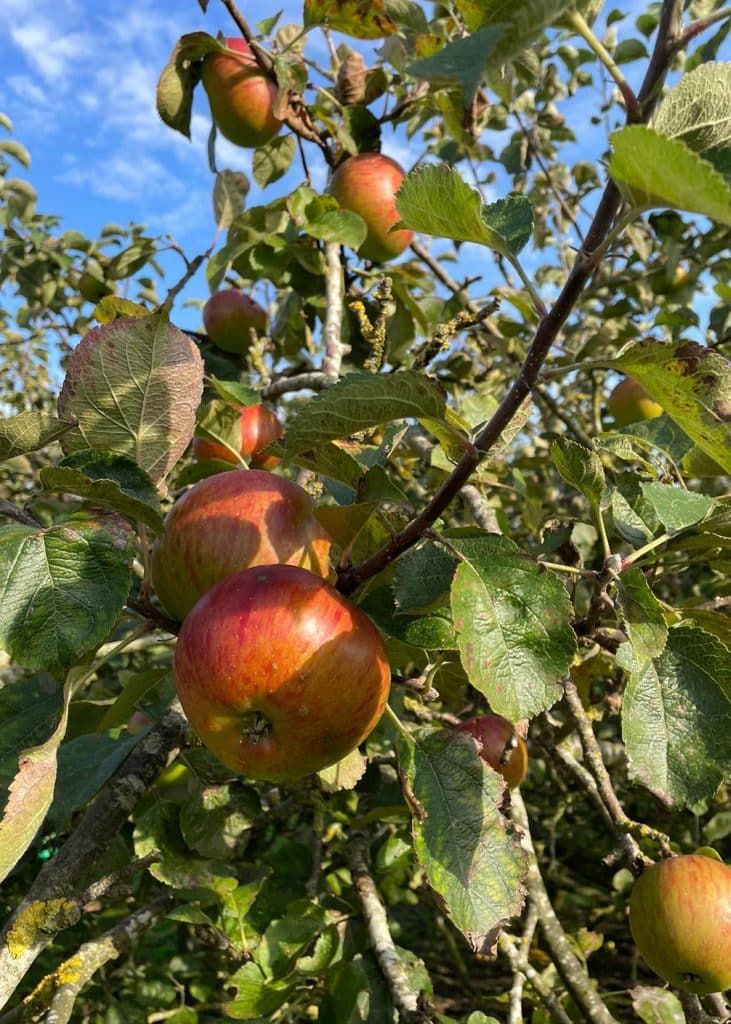
You’re also selling produce sourced from other farms. What’s the nature of that relationship?
So, the idea is to build a network of farms that share a similar way of doing things – regenerative, organic, however you want to label it. Ultimately, it’s people growing good food in a positive way. For example, there’s one guy that’s growing peas, but he’s growing wild flowers mixed into the crop. So, you’ve got a field of peas, but with an under-layer of wild flowers. Across a whole field, you end up with millions of extra flowers, and there are lots more insects because of that. We’re looking for people like him who are doing interesting things with farming, we’re buying stuff from them and putting it out into central London. We want this to be the main hub for regenerative agriculture in London.
What can we look forward to seeing on the stand in the coming months?
There’ll still be lots of apples. There’s going to be plenty of squash. There are mushrooms, carrots, beetroot. Brussels sprouts will be coming in, all the Christmas stuff. We’re getting everything ready for Christmas now. We’re trying to work the shop so it’s completely seasonal. There’s still loads of food around now; the challenge will be, at certain times of the year, that there isn’t much growing. But that’s tomorrow’s problem!
Do you enjoy selling food direct to the public through markets?
Yes, it’s good fun. Whether or not people like what you’re doing, you get such a quick reaction. Luckily for me, more people like it than don’t, so they keep coming back each week. We see lots of the same faces, week in, week out, which is nice. It’s like holding 200 brief conversations simultaneously.
By the standards of modern farming, yours is a very small operation. Are the things you do to support the environment replicable on a larger scale?
Yes, regenerative farming is definitely something you can do in a way that would look from the outside more like traditional agriculture – like standard fields of crops. There is a tension in some people’s minds between modern farming and the environment, but I think you can combine the two. To give the devil its due, the farmers who are doing that large-scale monocropping are producing huge amounts of food, which simply wasn’t possible before. I think it’s entirely feasible that you can combine these two schools of thought so you’re getting the best of both worlds. Regenerative farming doesn’t have to be limited to little orchards like this.
